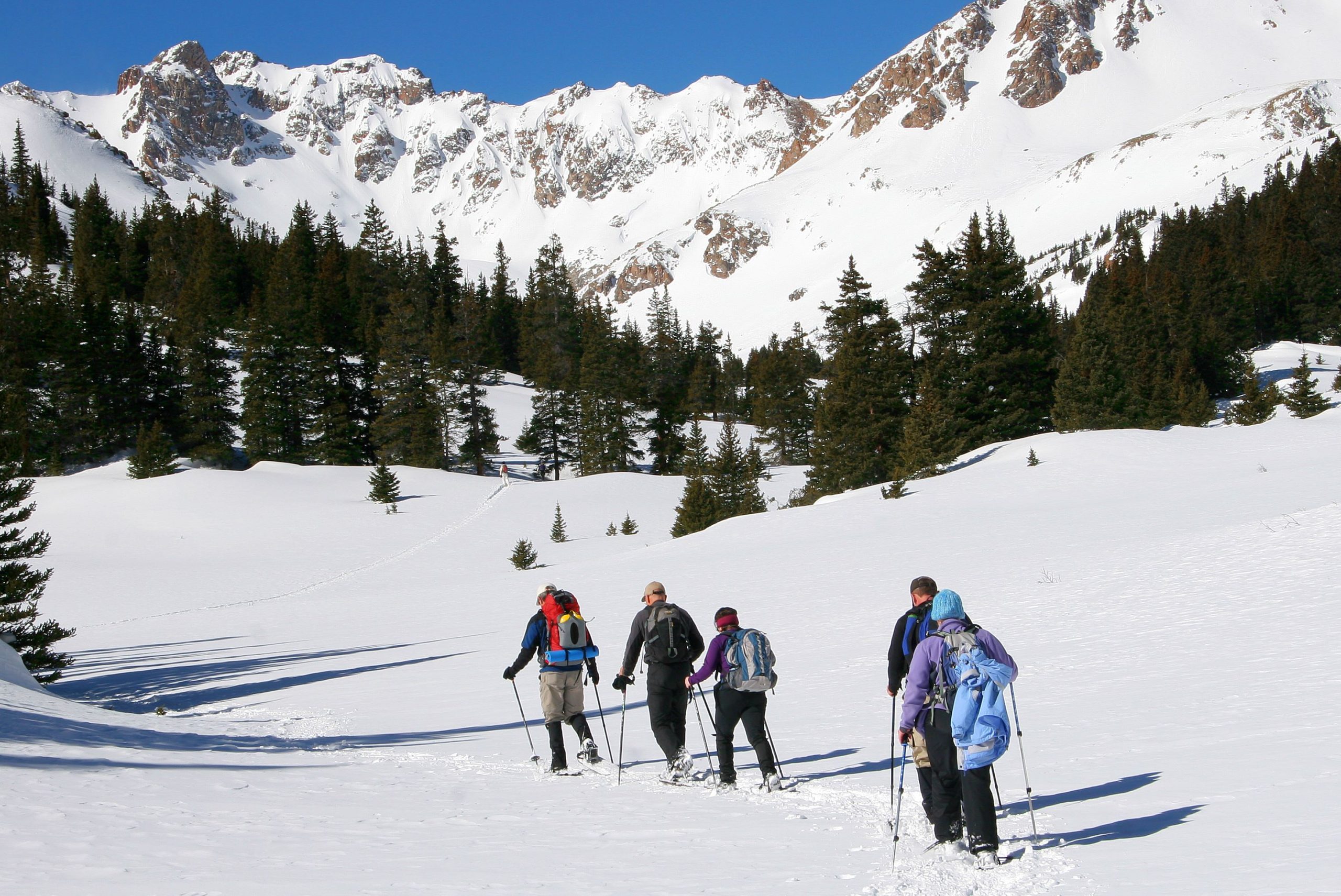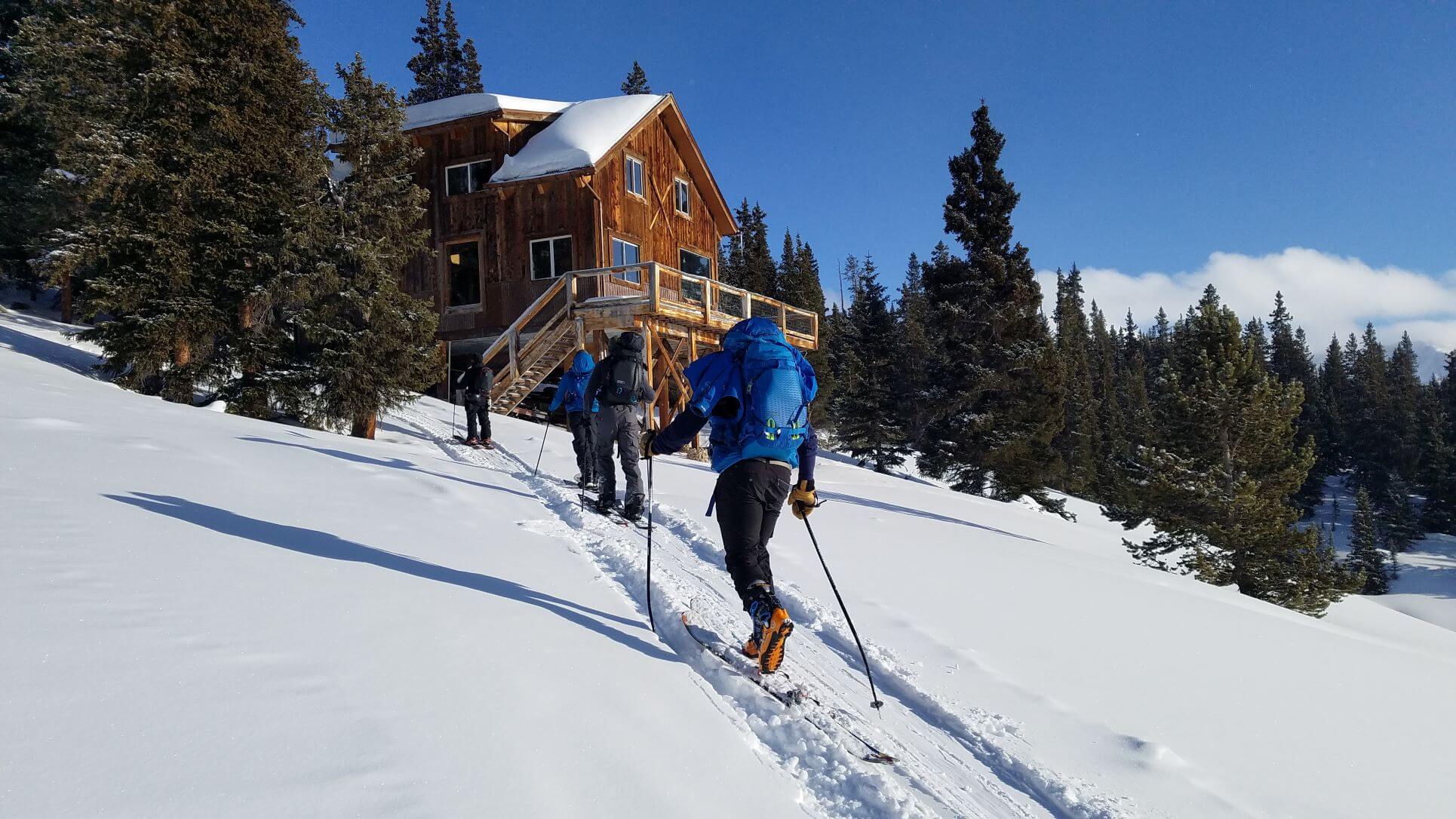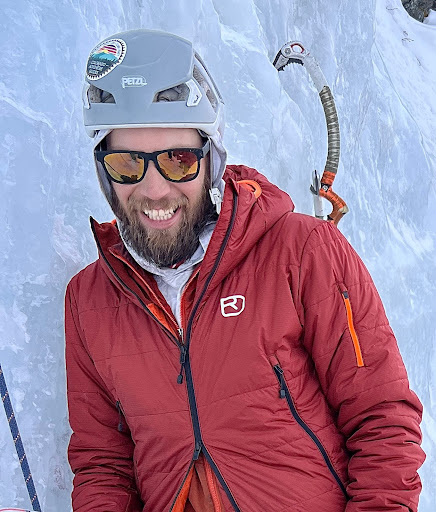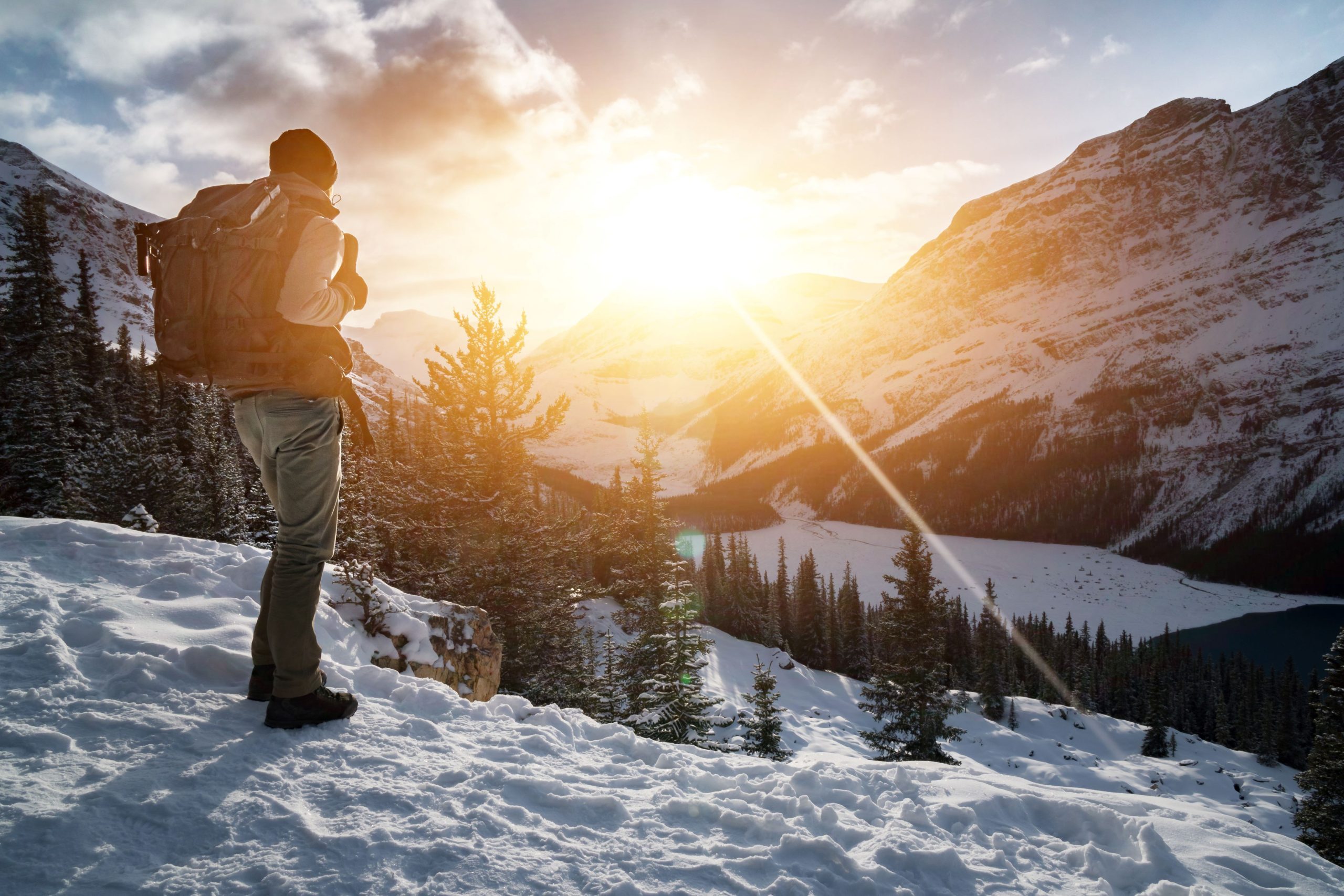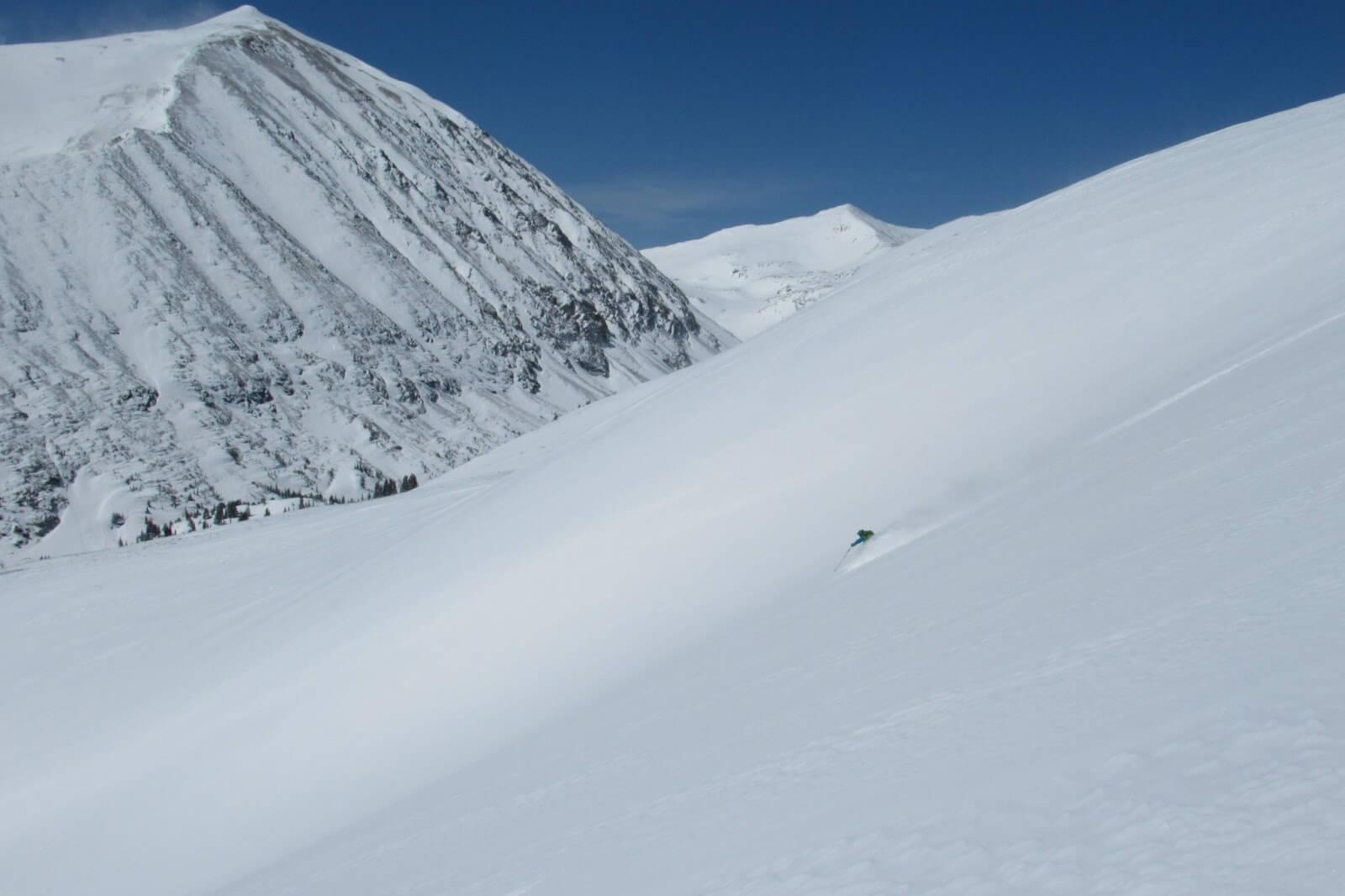
How To Get Into Backcountry Snowboarding
The First Steps
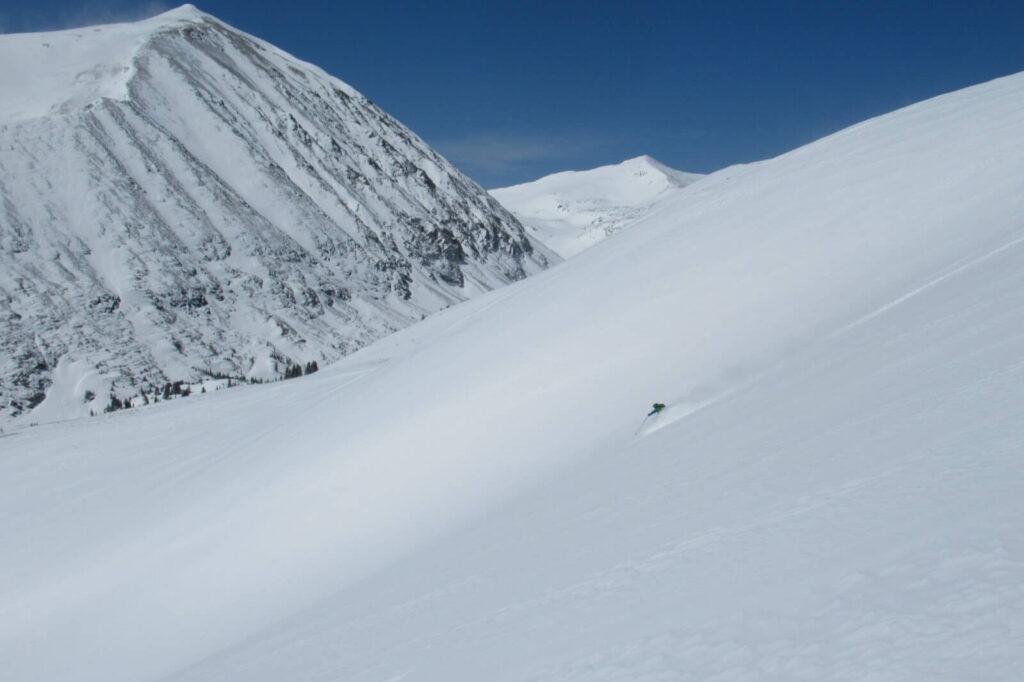
Breckenridge and Vail ski areas average about 1.6 million skier visits per season. If I break out my calculator and do some quick math, based on a 150 day season, that’s a crapload of skiers! Using a standard conversion scale, a ~crapload of skiers~ equals….long lift lines. But, luckily, there’s an alternative. Over the last decade, backcountry skiing and snowboarding has taken the world by storm (pun intended).
Why this spike in interest for the backcountry? There’s a variety of reasons, but the most common that I’ve heard are: the lift lines and long waits or the fact that the mountain gets tracked out by 9:30am on powder days, resulting in the phenomenon we refer to as “powder panic.” Surely there are other contributing factors. But, what is clear is that there’s a decreasing quality of the skier experience at these busy resorts. Ultimately, these factors have begun pushing people off of the ski area and into the backcountry.
Insights for Beginner Backcountry Skiers
The backcountry, however, isn’t controlled in the same manner as a ski area. There are no visible boundaries, no ski patrol to scoop you up if you get hurt, no avalanche mitigation to ensure your safety, and no lifts to whisk you to the top in under 10 minutes. Instead, backcountry travelers create their own boundaries; carry gear for self-extraction; study, learn, and practice how to avoid avalanches; practice avalanche rescue techniques; and spend countless hours skinning up mountains for mere minutes of actual downhill skiing. For some, the concept is ridiculous. For others, the rewards are worth all of the work. For those of us who prefer to color outside the lines, backcountry skiing is a lifelong pursuit.
So, you might ask, how does one become a backcountry skier or snowboarder? My immediate, (and more philosophical) response is patience. What I mean by this is, don’t rush. Backcountry skiing is a journey. There is a lifetime of information to ingest and understand in order to explore a lifetime of terrain. Being in a hurry will only increase your risk. But, a more helpful answer is this question: you need the correct equipment and know how to use it properly, you need the education and you need to apply and practice your skills often. Seems simple enough and it can be. However, the backcountry and the snowpack are very dynamic, meaning, often changing so we must stay on top of our game to keep ourselves and our partners safe. Let’s take a look at the professionally recommended progression for folks interested in making the transition from lift-service skiing and snowboarding to the backcountry.
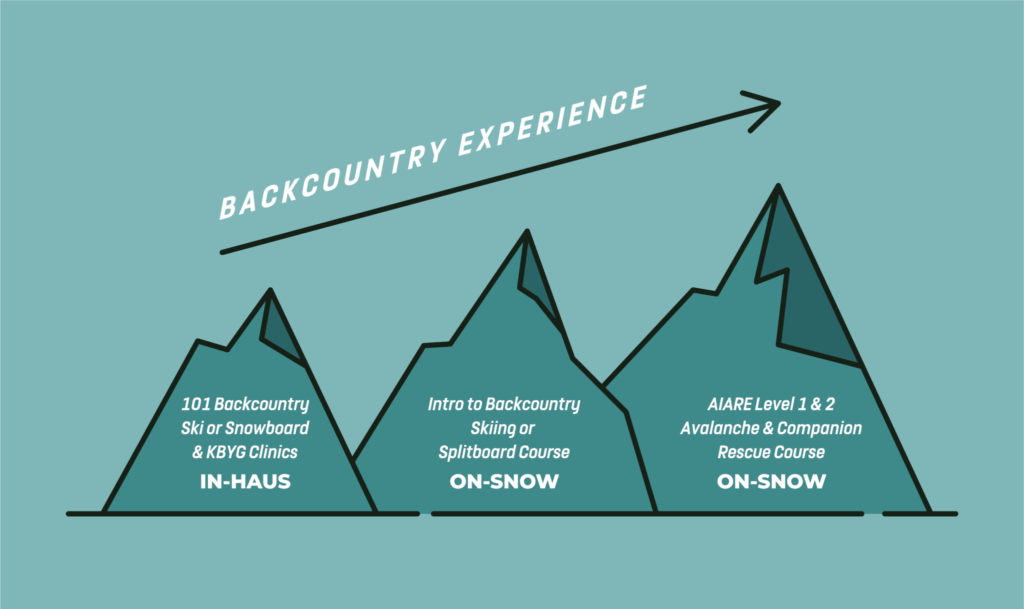
Step 1: Clinics and Info Sessions
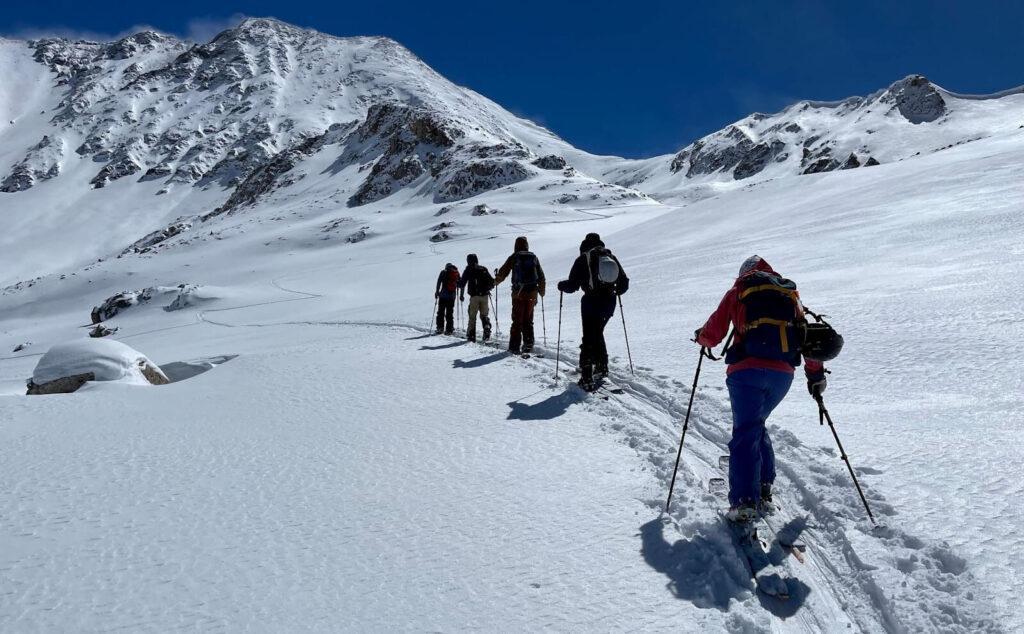
There are numerous clinics, avalanche awareness classes, and/or basic information sessions held around the Front Range of Colorado. They are commonly held at various breweries and ski shops in Denver, Colorado Springs, Golden, and Boulder, as well as, in the high-country in places like Breckenridge, Dillon, Frisco, Silverthorne and Vail. These sessions usually cover the basics of what you need to know just to dip your toes into the backcountry scene and you’ll have an opportunity to ask any questions that have been burning since the backcountry piqued your interest.
Typically you can find these clinics via your local mountaineering/backcountry shop, your local guide service and avalanche course provider, or the Colorado Avalanche Information Center. Your best bet is to follow their social channels to keep up with announcements on these types of community events. You can also check out books like Staying Alive in Avalanche Terrain and Snow Sense to get a jump on your avalanche safety knowledge. Ortovox, a mountaineering and backcountry safety equipment manufacturer from Germany has some great resources in their Ortovox Safety Academy web page.
Step 2: Introduction to Backcountry Skiing and Splitboarding

This one-day, on-snow course is designed with the “never-ever” backcountry skier/rider in mind. Students should have the opportunity to learn about the equipment and how it works, put it to use, and travel in the backcountry with a professional instructor. Avalanche educators recommend a course like this prior to taking an AIARE avalanche course to learn the foundational skills of ski touring or splitboarding. Backcountry skis and splitboards are not the same as the equipment we use at normal ski resorts. There are many moving parts which provide the ability to ski uphill to reach the point from which you’ll ski or snowboard down. Its important to take the time to learn the ins and outs of over-snow travel and associated techniques, like how to apply and remove skins, adjust alpine touring boots, get into and out of your binding, switch bindings between ski and walk mode, how to dress for uphill and downhill, skinning technique, setting skin tracks, performing kick turns, and a variety of other important basic skills.
What’s Next? – Avalanche Safety Training Courses
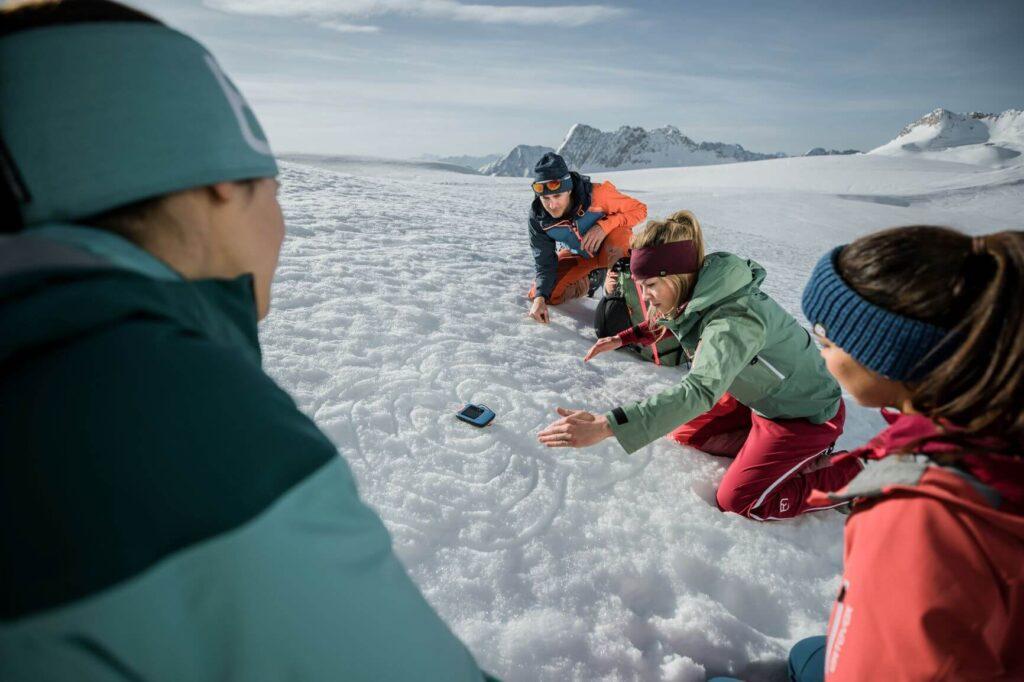
Once you’ve taken the steps to gather the basic information about backcountry skiing and splitboarding and have spent some time out in the mountains in low-consequence terrain honing your skinning technique and practicing with your equipment, whether in a formal course environment or with knowledgeable friends, you’ll be ready for the next step. From here, you’ll begin looking for the right avalanche safety course. In the next blog, we’ll go over the progression of avalanche safety classes, AIARE Level 1, AIARE Avalanche Rescue, and AIARE Level 2 and do a simple breakdown of the curricula.

